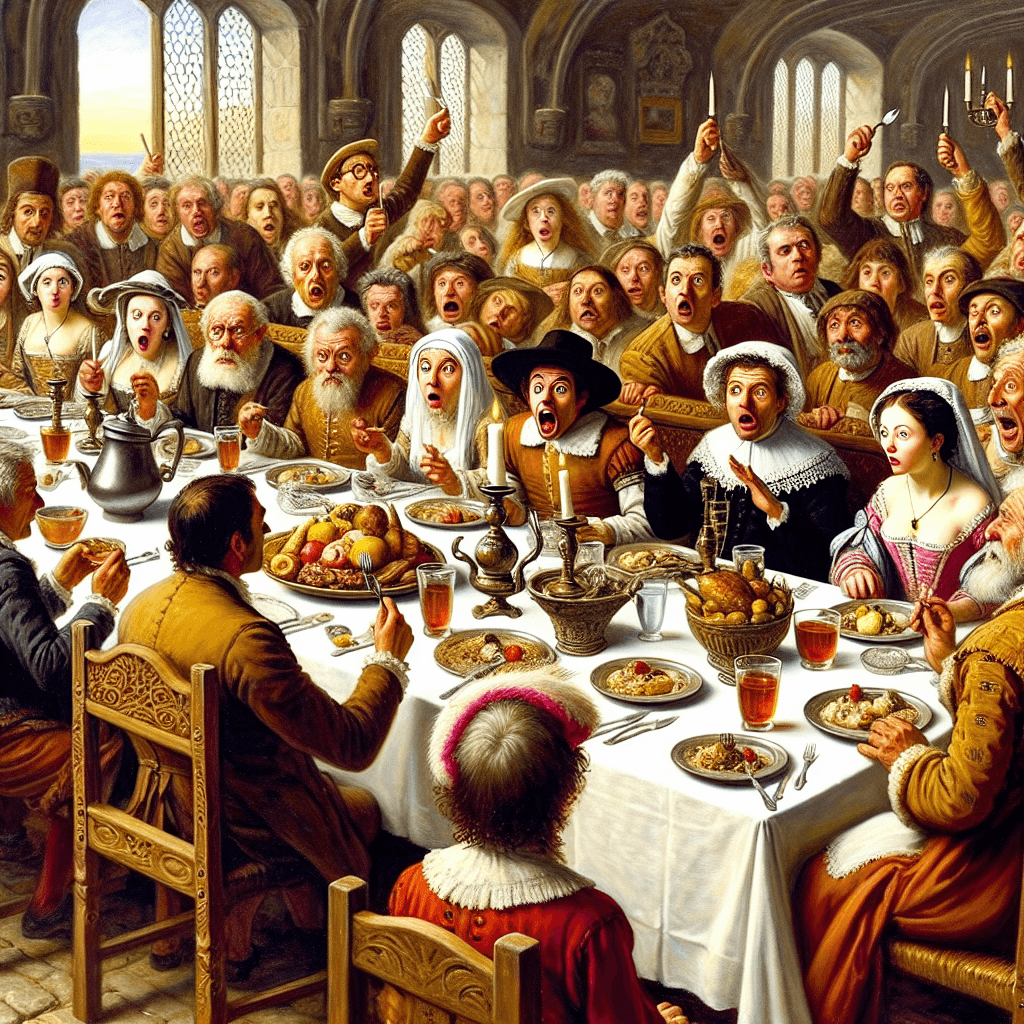Why was using a fork once considered a scandalous, devilish act
Before it was a staple of the dinner table, the humble fork was condemned by the church as a diabolical tool—an ungodly, artificial instrument for those who found their God-given hands unworthy.


Too Long; Didn't Read
TLDR: Forks were seen as devilish because their two-pronged shape resembled a miniature pitchfork. They were also considered a scandalous, ungodly, and effeminate affectation, as it was believed God gave humans fingers to eat with, and using an artificial tool was a sign of vanity.
The Devil's Pitchfork: Why Was Using a Fork Once Considered a Scandalous, Devilish Act?
Imagine sitting down for dinner, reaching for your fork, and suddenly being accused of vanity, effeminacy, and even consorting with the devil. It sounds absurd, but for centuries, this humble utensil was at the center of a heated cultural and religious controversy. The simple act of using a fork, which we now take for granted, was once viewed as a scandalous and ungodly affectation. This post delves into the surprising history of the fork, exploring the religious and social reasons why this now-essential piece of cutlery was once a symbol of sin and scorn.
A Foreign and Unmanly Intruder
The journey of the fork into European dining culture was a slow and fraught one. While rudimentary forks existed in ancient civilizations, the small, two-pronged dining fork as we might recognize it gained prominence in the affluent courts of the Byzantine Empire in the Middle East. It first appeared in Europe around the 11th century, brought to Italy by a Byzantine princess, Maria Argyropoulina. When she married the son of the Doge of Venice, she shocked the court by refusing to eat with her hands, instead using a small golden fork.
The reaction was not one of admiration, but of suspicion. The fork was seen as an overly delicate, foreign instrument. In a European culture where masculinity was often demonstrated through rugged practicality, using a dainty tool instead of one’s hands or a sturdy knife was widely considered effeminate and weak. It was an unnecessary luxury, a sign of being too soft and decadent for the world.
An Affront to God and a Tool of the Devil
The strongest opposition to the fork, however, came from the church. The theological argument against it was surprisingly direct: God, in his infinite wisdom, gave humans natural forks at the ends of their arms—their fingers. To use an artificial, man-made instrument to bring food to one's mouth was seen as a rejection of God’s divine plan. It was an act of hubris, implying that God’s design was somehow insufficient.
This religious condemnation was famously articulated by St. Peter Damian, a powerful cardinal. Observing the Byzantine princess and her fork, he was appalled. He wrote that her "immoderate refinement" was an offense to God. When she died horribly from the plague a few years later, he declared it was divine punishment for her sinful vanity. He decried the fork as an "instrument of the devil."
This association with evil was strengthened by the fork’s appearance. With its two sharp prongs, it bore an uncanny resemblance to popular depictions of the Devil’s pitchfork. For the deeply superstitious medieval populace, using a miniature version of Satan’s own tool to eat was simply inviting evil to the dinner table.
The Slow Road to Acceptance
Despite the powerful religious and cultural resistance, the fork slowly began to gain a foothold, primarily for practical reasons.
- Italy Leads the Way: In Italy, where pasta was becoming a more common dish, a fork proved far more practical than fingers. It began to be adopted by the merchant class and nobility as a status symbol and a marker of refined manners.
- Royal Influence: The fork’s popularity spread from Italy to France, largely thanks to Catherine de' Medici, who brought her Italian dining customs, including forks, to the French court in the 16th century.
- Changing Ideas of Hygiene: As Europe moved into the Renaissance and Enlightenment, concepts of cleanliness and etiquette evolved. Sharing a single bowl and eating with one’s hands came to be seen as less civilized. The fork offered a more hygienic way to eat, especially at communal feasts.
Even so, acceptance was not universal. When the English traveler Thomas Coryat introduced the fork to England in the early 17th century after a trip to Italy, he was widely mocked and ridiculed for his "effeminate" Italian habit. It would take nearly another century for the fork to become commonplace across Europe and in the American colonies.
Conclusion
The scandalous history of the fork serves as a fascinating reminder that the objects we consider normal are steeped in cultural and historical context. What was once condemned as a "devilish" tool of vanity and an affront to God is now an indispensable part of our daily lives. The backlash against the fork stemmed from a potent mix of religious dogma, fear of foreign influence, and rigid ideas about masculinity. Its eventual acceptance illustrates a gradual shift in societal values towards hygiene, refinement, and etiquette. The next time you pick up your fork, take a moment to appreciate its long and controversial journey from a symbol of sin to a staple of the dinner table.


